Nothing surprised me more in Charles Dickens’ novel Our Mutual Friend than the central role played by a heap of dust. That’s where Old Mr. Harmon had made his fortune. He was a ‘Dust Contractor,’ a business i had assumed was as fictional as the plot. The dust heap is also where Harmon chose to hide his will.
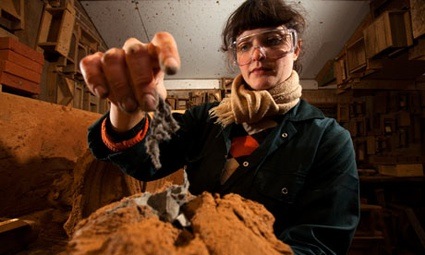 Artist Serena Korda, making bricks with dust she has collected from households and organisations. Photograph: Graham Turner for The Guardian
Artist Serena Korda, making bricks with dust she has collected from households and organisations. Photograph: Graham Turner for The Guardian
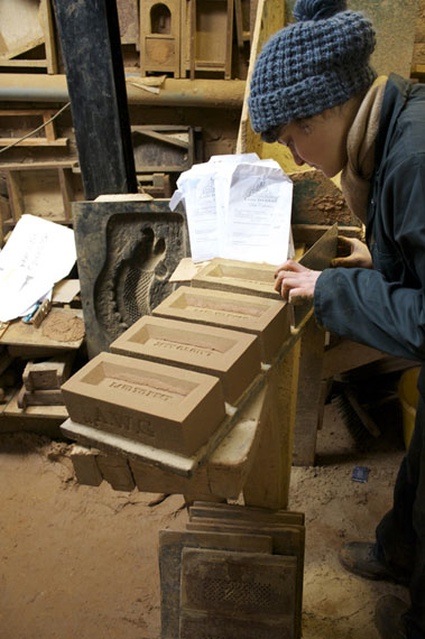 Making bricks at H.G. Matthews. Source
Making bricks at H.G. Matthews. Source
It’s only last week, when i visited the exhibition Dirt: The filthy reality of everyday life at the Wellcome Collection in London, that i realized that fortune could indeed be made out of dust. The project that Serena Korda is currently showing in the exhibition was inspired by the commercialisation of waste in Victorian London, in particular the dust heaps which dominated the skylines at the top of Gray’s Inn Road.
Dust heaps provided a major source of income and supported a wide range of industries including the making of bricks. Ash, cinders and rubbish from the heap were mixed with the mud of London’s nearby fields to produce bricks which were then used to build the city. One of the paintings displayed in the Dirt exhibition shows “the Great Dust Heap,” a grey mountain of trash near King’s Cross, seen from Maiden Lane (present York Road.) The description of the image states that the heap was removed in 1848 to assist in rebuilding the City of Moscow, Russia. According to the artist, the dust eventually formed part of St.Petersburg’s foundations and were sold for £20,000.
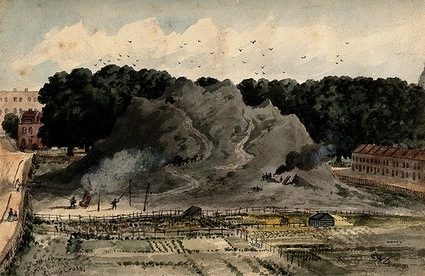 King’s Cross, London: the Great Dust-Heap, next to Battle Bridge and the Smallpox Hospital. Watercolour painting by E. H. Dixon, 1837. Wellcome Library, London
King’s Cross, London: the Great Dust-Heap, next to Battle Bridge and the Smallpox Hospital. Watercolour painting by E. H. Dixon, 1837. Wellcome Library, London
A few months ago, Korda started asking the public to collect dust and donate it for the exhibition. The artwork, called Laid to Rest, consists of hundreds of commemorative bricks that the artist has manufactured at the HG Matthews brickworks in Buckinghamshire. Each brick contains the specific dust of its contributor (sometimes literally since much household dust is made of skin and hair particles) and is imprinted with information describing its origins. The bricks exhibited at the Wellcome Collection contain dust collected by members of the public or by the artist herself in place such as the Royal Albert Hall, the curator’s office of the Charles Dickens Museum, St Pancras church, private homes, the House of Commons, etc.
When 500 bricks have been shaped they will be processed through the streets of London until they finally are finally returned to earth and buried in a hole. Ashes to ashes, dust to dust.
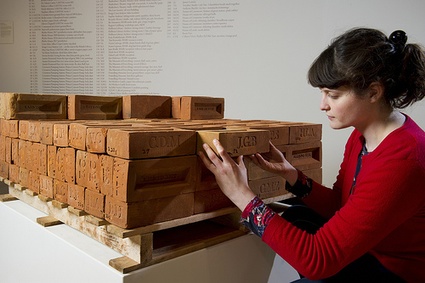 Serena Korda, Laid to Rest, 2011. Wellcome Collection, London
Serena Korda, Laid to Rest, 2011. Wellcome Collection, London
Ken Arnold, Head of Public Programmes at Wellcome Collection says: “Our relationship with dirt is fascinatingly ambivalent, and one we often choose to shy away from. Serena Korda’s ‘Laid to Rest’ reminds us that dirt has always been part of daily life. By asking people to help make bricks from the dust of their surroundings, she is encouraging people to see that their surroundings are built from dust.”
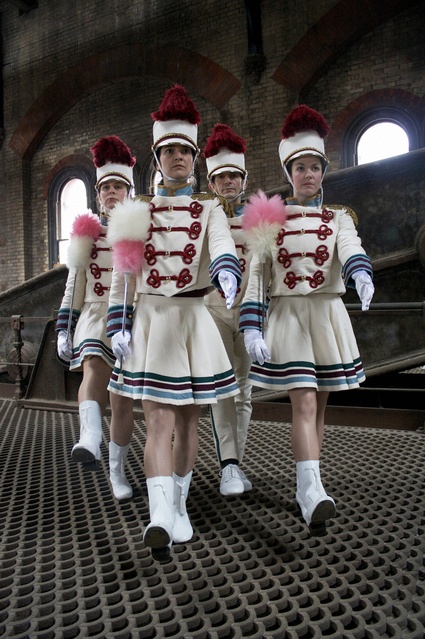 Serena Korda, Laid to Rest, The Brick-Keepers Dance, Crossness Pumping Station. Credit: Tai Shani
Serena Korda, Laid to Rest, The Brick-Keepers Dance, Crossness Pumping Station. Credit: Tai Shani
Throughout the project, the bricks are included in dance and music events. The video Laid to Rest: The Brick-Keepers documents a performance where cleaning majorettes dance around a stack of bricks, celebrating the transformation of people’s dust from the almost invisible to the palpable. The film was shot at Crossness Pumping Station, a sewage pumping station designed by Sir Joseph Bazalgette and Charles Henry Driver. It was constructed between 1859 and 1865 as part of Bazalgette’s redevelopment of the London sewerage system which played a key role in fighting cholera epidemics and cleansing the Thames.
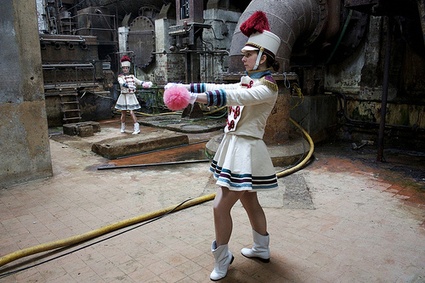 Serena Korda, Laid to Rest, The Brick-Keepers Dance, Crossness Pumping Station. Credit: Tai Shani
Serena Korda, Laid to Rest, The Brick-Keepers Dance, Crossness Pumping Station. Credit: Tai Shani
Dirt: The filthy reality of everyday life is on view at the Wellcome Collection until August 31, 2011. More stories about the exhibition soon.
Blog of the project.
Related projects: The Dustbunnies and Dusty Relief.
